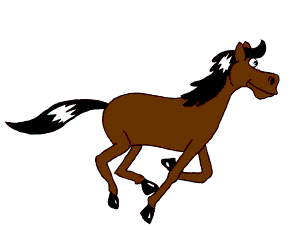Traditional animation

Traditional animation (also called cel animation or hand-drawn animation) was the process used for most animated films of the 20th century. The individual frames of a traditionally animated film are photographs of drawings, which are first drawn on paper. To create the illusion of movement, each drawing differs slightly from the one before it. The animators' drawings are traced or photocopied onto transparent acetate sheets called cels, which are filled in with paints in assigned colors or tones on the side opposite the line drawings. The completed character cels are photographed one-by-one onto motion picture film against a painted background by a rostrum camera.
The traditional cel animation process became obsolete by the beginning of the 21st century. Today, animators' drawings and the backgrounds are either scanned into or drawn directly into a computer system. Various software programs are used to color the drawings and simulate camera movement and effects. The final animated piece is output to one of several delivery media, including traditional 35 mm film and newer media such as digital video. The "look" of traditional cel animation is still preserved, and the character animators' work has remained essentially the same over the past 70 years. Some animation producers have used the term "tradigital" to describe cel animation which makes extensive use of computer technology.
Examples of traditionally animated feature films include Pinocchio (United States, 1940), Animal Farm (United Kingdom, 1954), and Akira (Japan, 1988). Traditional animated films which were produced with the aid of computer technology include The Lion King (US, 1994) Sen to Chihiro no Kamikakushi (Spirited Away) (Japan, 2001), Treasure Planet (USA, 2002) and Les Triplettes de Belleville (2003).
- Full animation refers to the process of producing high-quality traditionally animated films, which regularly use detailed drawings and plausible movement. Fully animated films can be done in a variety of styles, from more realistically animated works such as those produced by the Walt Disney studio (Beauty and the Beast, Aladdin, Lion King) to the more "cartoony" styles of those produced by the Warner Bros. animation studio (Iron Giant, Quest for Camelot, Cats Don't Dance). Many of the Disney animated features are examples of full animation, as are non-Disney works such as The Secret of NIMH (US, 1982) and The Iron Giant (US, 1999), Nocturna (Spain, 2007)
- Limited animation involves the use of less detailed and/or more stylized drawings and methods of movement. Pioneered by the artists at the American studio United Productions of America, limited animation can be used as a method of stylized artistic expression, as in Gerald McBoing Boing (US, 1951), Yellow Submarine (UK, 1968), and much of the anime produced in Japan. Its primary use, however, has been in producing cost-effective animated content for media such as television (the work of Hanna-Barbera, Filmation, and other TV animation studios) and later the Internet (web cartoons). Some examples are; Spongebob Squarepants (USA, 1999-present), The Fairly OddParents (USA, 2001-present) and Invader Zim (USA, 2001-2006).
- Rotoscoping is a technique, patented by Max Fleischer in 1917, where animators trace live-action movement, frame by frame. The source film can be directly copied from actors' outlines into animated drawings, as in The Lord of the Rings (US, 1978), used as a basis and inspiration for character animation, as in most Disney films, or used in a stylized and expressive manner, as in Waking Life (US, 2001) and A Scanner Darkly (US, 2006). Some other examples are: Fire and Ice (USA, 1983) and Heavy Metal (1981).
- Live-action/animation is a technique, when combining hand-drawn characters into live action shots. One of the earlier uses of it was Koko the Clown when Koko was drawn over live action footage. Other examples would include Who Framed Roger Rabbit? (USA, 1988), Space Jam (USA, 1996) and Osmosis Jones (USA, 2002).

Posting Komentar